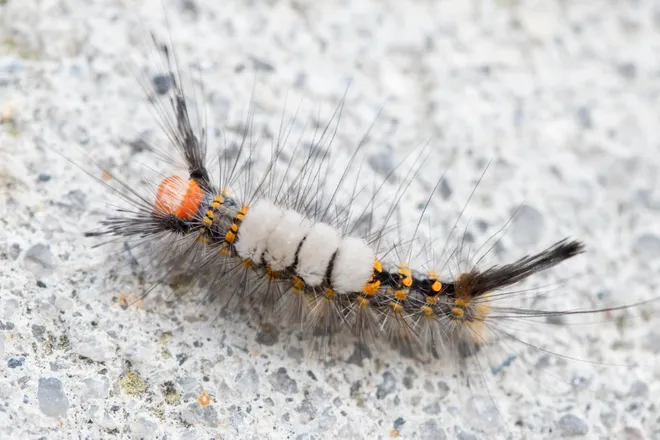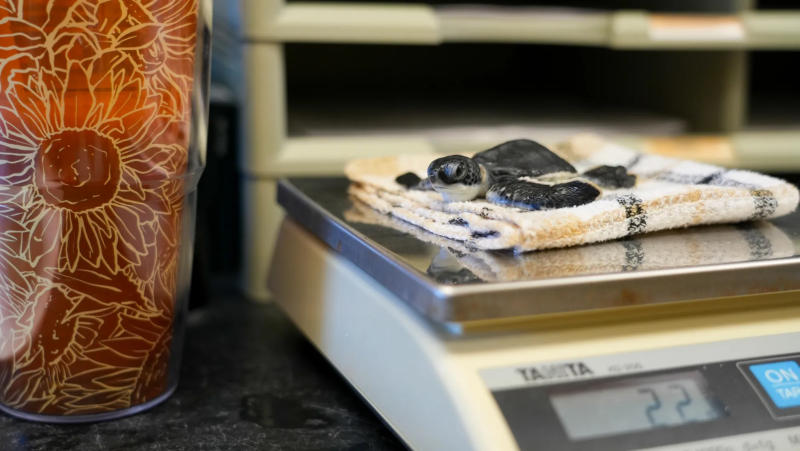Don't touch the alien-like creatures: What to know about the caterpillars all over Florida
These little critters are fuzzy, colorful and all over Florida – but don't touch the caterpillars or you'll be in for a bad time.
It's practically raining tussock moth caterpillars all over north and central Florida. They're falling out of the sky and onto everything else. Whether they're covering someone's tire or crowding a backyard, the caterpillars are taking over this year.
But be warned, the fuzzy little guys can leave behind an irritating mark if they're touched, so it's best to stay away. The spiky hairs on their back can leave the spot feeling really itchy and cause it to break out into a rash.
Here's everything know about the caterpillars.

What is a tussock moth caterpillar?
There are three species of tussock moth caterpillars found in Florida.
- The fir tussock moth: orange-colored spots along the back and sides
- The white-marked tussock moth: lighter body color and yellow spots
- The definite tussock moth: yellow or tan head with a pale body, hair pencils and tussocks
According to the Florida Museum of Natural History, the fir tussock is the most common, the white-marked is the second most common and the definite is the rarest of the three.
The caterpillars are fuzzy with colorful bodies and prefer to feed on oak trees.
Are tussock moth caterpillars poisonous?
The caterpillar is not venomous or poisonous. But their hairs, which are known as stinging hairs, are irritating and can cause rashes or make your skin feel like its burning and itchy.
What do I do if I touch a tussock moth caterpillar?
According to National Capital Poison Center, these are some steps you should take if you touch one of these caterpillars:
- Cover the area that touched the caterpillar with tape.
- Pull it off to get any of the little hairs out of your skin.
- Wash the area with soap and water.
- Apply baking soda and water to help with any itchiness.
Reactions to the bug should only last around a day.
If possible, keep from standing under oak trees, the caterpillar's host plant, so they don't fall on you if they get knocked off any of the branches.
Can the caterpillars hurt plants?
They can. According to the University of Florida, the fuzzy insects have little impact on their preferred snack, oak trees. But the caterpillars can be swept away by the wind and taken to another plant.
It will demolish the foliage of the unlucky small trees and shrubs it lands on.
How do I protect my garden from tussock moth caterpillars?
The university recommends applying insecticides to the shrubs and trees that are threatened by heavy-feeding and to the host tree before the caterpillars mature and their populations begin to spread.
Gardeners can also use a broom and sweep the pesky bug into a bucket filled with soapy water.
Finally, though they may be difficult to remove, the university recommends walking around the property with tweezers or something similar and plucking the caterpillars' cocoons off by slipping the tool in between it and the wall it planted itself on. Be sure to wear protective gear while doing this as the bugs' cocoons can irritate skin, too.

Fun with the caterpillars
For an exciting learning experiment for adults and kids alike, place a cocoon in a well ventilated jar or cup and watch the moth emerge from its cocoon.
The university says this should happen within 10 days.
Contributing: Samantha Neely, USA TODAY NETWORK - Florida
Julia is a trending reporter for USA TODAY. She has covered various topics, from local businesses and government in her hometown, Miami, to tech and pop culture. You can follow her on X, formerly known as Twitter, Instagram and TikTok: @juliamariegz.
Disclaimer: The copyright of this article belongs to the original author. Reposting this article is solely for the purpose of information dissemination and does not constitute any investment advice. If there is any infringement, please contact us immediately. We will make corrections or deletions as necessary. Thank you.





